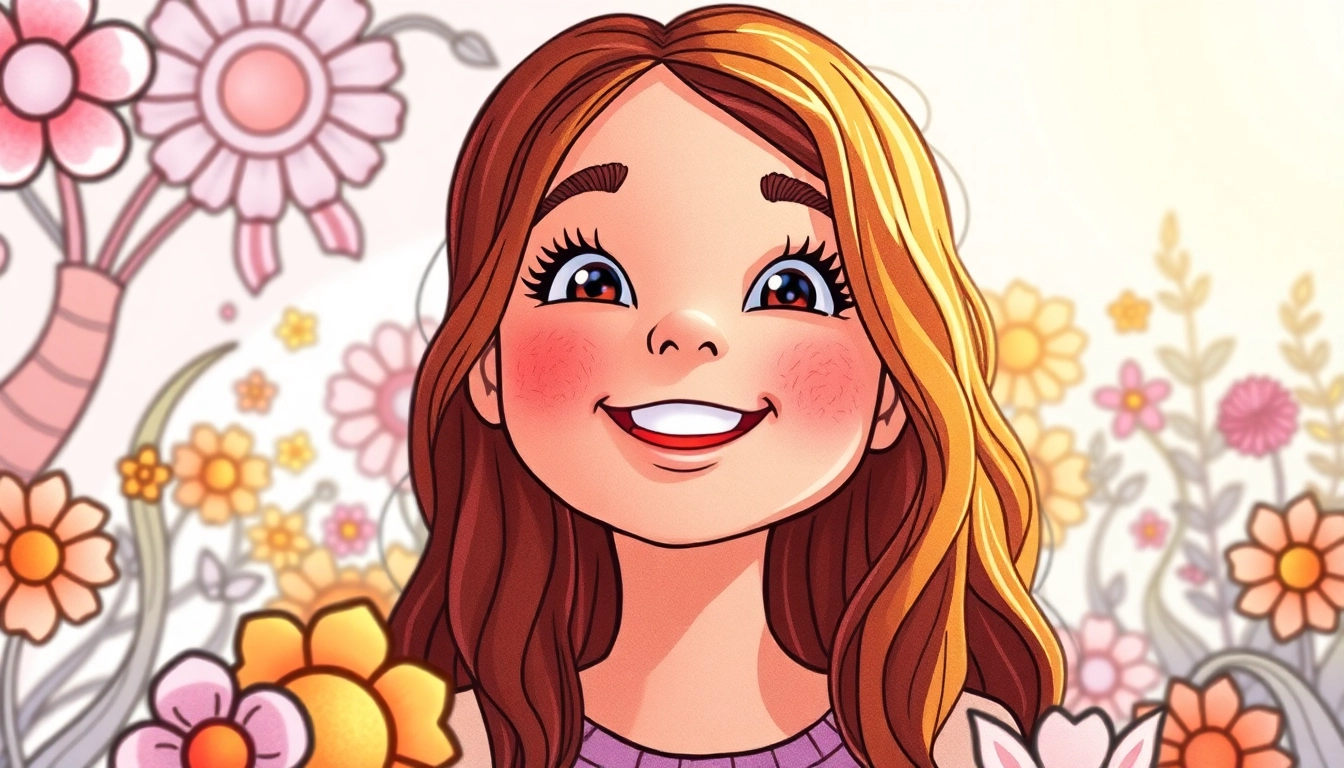Unlock a World of Creativity with Our Free Coloring Pages for All Ages
Unlocking Creativity and Benefits: The Ultimate Guide to Free Coloring Pages
Coloring has long been celebrated as a versatile activity that fosters creativity, relaxation, and educational growth across all age groups. Today, with the advent of digital resources and easy-to-access online repositories, exploring free coloring pages has become more convenient than ever. Whether you’re a parent looking to entertain your children, an educator seeking engaging classroom activities, or an adult exploring mindfulness through art, free coloring pages serve as a valuable tool for inspiration, learning, and relaxation. In this comprehensive guide, we delve into the multifaceted world of free coloring pages, exploring their benefits, how to find the best options, and practical tips to incorporate them into your routine for maximum benefit.
Understanding the Benefits of Free Coloring Pages
Stress Relief and Mindfulness through Coloring
One of the primary reasons coloring has gained popularity in recent years is its capacity to serve as a stress-relief activity. Engaging in coloring prompts a meditative state, helping to reduce anxiety and promote mindfulness. When individuals focus on coloring intricate designs or calming themes, their minds become anchored in the present moment, effectively reducing racing thoughts and emotional tension. Studies in neuroscience suggest that coloring stimulates the brain’s relaxation response, similar to meditation, which can lead to lowered cortisol levels and enhanced mental well-being. For adults, utilizing free coloring pages tailored for mindfulness—like mandalas, nature scenes, or abstract patterns—can create a therapeutic escape from daily stressors.
Developing Creativity and Fine Motor Skills
Coloring nurtures creativity, as individuals choose color schemes, experiment with shading, and develop their artistic expression. For children, it enhances fine motor skills, hand-eye coordination, and color recognition. As kids grasp crayons, markers, or colored pencils, they refine their dexterity and control, which are foundational for writing and other precise tasks. Encouraging children to explore diverse themes and designs on free coloring pages allows them to build confidence in their artistic abilities while also fostering decision-making skills—selecting colors, determining the placement, and experimenting with different coloring techniques.
Educational Value for Kids and Adults
Beyond entertainment, coloring can be an educational tool. For children, themed coloring pages—featuring alphabet characters, animals, or historical figures—support learning objectives such as vocabulary, science, and social studies. For adults, coloring activities centered around anatomy, architecture, or nature can deepen understanding of complex concepts. Furthermore, coloring can enhance concentration, patience, and problem-solving skills, especially when working on detailed or challenging designs. Incorporating themed free coloring pages into educational environments encourages interactive learning and cognitive development for all ages.
How to Find and Choose the Best Free Coloring Pages
Types of Themes and Designs Available
Browsing through the vast array of free coloring pages reveals an astonishing diversity of themes—ranging from seasonal celebrations and holiday motifs to fantasy worlds and everyday scenes. Popular themes include animals, flowers, superheroes, famous landmarks, and cultural symbols. For tailored experiences, many websites categorize pages by themes such as Disney characters, holiday-specific designs (Halloween, Christmas, Easter), or educational topics like space or world maps. Selecting a theme that resonates with the user increases engagement and satisfaction. For instance, children fascinated by dinosaurs are more inclined to color pages featuring prehistoric creatures, making the activity both fun and educational.
Filtering by Age and Skill Level
Choosing age-appropriate coloring pages ensures the activity remains enjoyable and beneficial. Coloring pages designed for preschoolers tend to feature larger shapes, simple outlines, and fewer intricate details, aiding young children in developing their fine motor skills. Conversely, pages for teenagers or adults often include complex shading, detailed patterns, or artistic motifs intended for more advanced users. Many sites offer filtering tools—such as difficulty level, age group, or skill level—that help streamline the selection process. Organizing coloring pages based on these filters guarantees a suitable challenge, fostering both learning and enjoyment.
Using Search Parameters for Optimal Results
Strategic search techniques can significantly enhance your ability to find precisely what you need. Using specific keywords combined with filters (e.g., “free Halloween coloring pages for preschool,” “detailed mandala coloring pages for adults”) yields more targeted results. Many websites also offer advanced search options or downloadable packs categorized by themes or difficulty levels, making it easier to access a broad spectrum of options efficiently. Exploring reputable platforms like Crayola, Monday Mandala, or Yay! Coloring Pages can provide high-quality, copyright-free options suitable for various purposes.
Tips for Downloading and Printing Coloring Pages
Ensuring Quality and Compatibility
High-resolution images ensure that printed coloring pages are clear and detailed, preventing pixelation or blurry outlines. When selecting free coloring pages, verify that the source provides printable PDFs or high-quality image files. Compatibility with your printer is also essential; standard laser or inkjet printers typically handle PDFs and JPEGs well. Adjust printer settings such as paper type (preferably 90-110 lb cardstock for coloring activities that involve markers or paints) and print quality to achieve the best results. Some websites specify recommended paper types, so always check the specifications before printing.
Choosing the Right Paper and Coloring Supplies
The choice of paper significantly impacts coloring experience. Thicker, acid-free paper prevents bleed-through and allows for a range of coloring media, including colored pencils, markers, or watercolors. For vibrant coloring and blending, consider using smooth, heavyweight cardstock. Color supplies should be compatible with the chosen paper; for example, alcohol-based markers work best on smooth surfaces, while colored pencils offer control on textured paper. Investing in high-quality supplies enhances the final appearance and durability of the artwork, especially if you plan to display it.
Creating a Comfortable Coloring Environment
Enhancing your coloring experience involves setting up an inviting and well-lit space. Natural light reduces eye strain and improves color perception. A sturdy table, comfortable chair, and organized supplies create an efficient workspace. Many artists recommend adjustable lighting and ergonomic seating, especially during long coloring sessions. Incorporate organizers for pencils, markers, and other tools to keep your area tidy. If you’re coloring with children, establish a dedicated, distraction-free zone that promotes focus and creativity.
Incorporating Free Coloring Pages into Your Routine
Daily or Weekly Coloring Sessions
Consistency enhances the benefits of coloring activities. Designate specific times—such as after-school hours, weekend mornings, or evening wind-down periods—for coloring. Regular sessions foster relaxation, improve focus, and develop skills over time. For adults, even 15-30 minute daily coloring can significantly diminish stress levels and boost mental clarity. Incorporate themed days—like Mandala Mondays or Nature Wednesdays—to introduce variety and keep the routine engaging. Using free coloring pages from trusted sources ensures a steady supply of fresh designs to sustain your activity schedule.
Sharing and Presenting Your Artwork
Showcasing completed artwork creates a sense of achievement and fosters community. You can share your colored pages on social media platforms, participate in online art challenges, or create digital galleries. For children, framing favorite pieces or creating albums encourages pride and motivation. Organizing virtual or local art displays introduces a social element, inspiring others to explore coloring activities. Additionally, sharing artwork helps build personal confidence and can inspire collaborative projects within families or educational groups.
Joining Online Communities and Challenges
Online forums, social media groups, and dedicated coloring platforms offer opportunities for engagement, feedback, and growth. Joining coloring challenges or themed contests can introduce new artistic techniques and inspire creativity. Platforms like Instagram, Reddit, or specialized forums host vibrant communities where users exchange tips, share their masterpieces, and discuss various coloring media. Many websites run seasonal or themed coloring challenges—participating can improve skills, expand your repertoire, and connect you with like-minded individuals. Consistent involvement in these communities reinforces routine and sustains motivation.
Best Practices for Creating Your Own Coloring Pages
Designing Unique and Engaging Patterns
Creating personalized coloring pages allows for tailored content that perfectly fits your or your audience’s interests. Designing engaging patterns involves balancing complexity with accessibility—intricate enough to challenge advanced colorers, yet not overwhelming for beginners. Use symmetry, repetition, and thematic motifs to craft captivating designs. For example, botanical illustrations, mandalas, or stylized caricatures are popular choices. Incorporating positive messages or cultural symbols enhances engagement and emotional connection. Experiment with different art styles—line art, abstract, or cartoon-like—to diversify your creations.
Tools and Resources for DIY Coloring Pages
Digital tools like Adobe Illustrator, CorelDRAW, or free alternatives such as Inkscape enable precise and scalable pattern creation. Hand-drawn designs can be scanned and cleaned up digitally. Additionally, there are online platforms like Canva or Procreate that simplify the design process with user-friendly interfaces. For beginners, tracing existing images or using stencil templates can be an effective starting point. Incorporating tutorials, brushes, and pattern libraries accelerates the creative process. Many educational blogs and YouTube channels provide step-by-step guides for designing coloring pages tailored for various skill levels.
Legal and Copyright Considerations
When creating or sharing coloring pages, respecting intellectual property rights is crucial. Use your original artwork or ensure that any borrowed content is licensed for reuse. Many artists offer free, Creative Commons-licensed designs—verify the license terms before distribution or sale. For personal use, creating your own designs or modifying existing ones with attribution remains compliant. If you plan to sell or commercialize your coloring pages, obtain appropriate licenses, and consider registering your work to protect against unauthorized use. Adhering to legal standards maintains ethical practices and fosters respect within the creative community.









